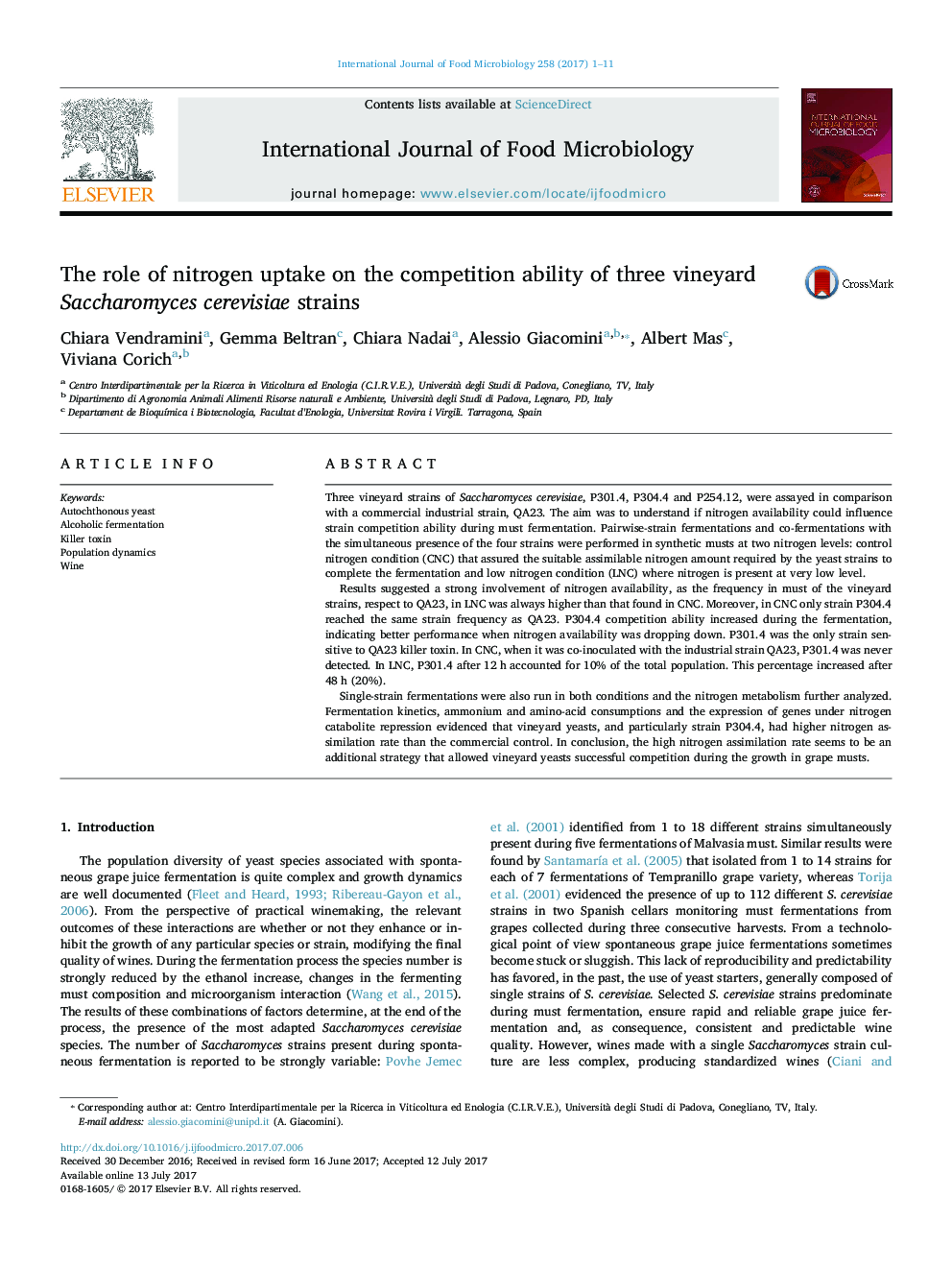| کد مقاله | کد نشریه | سال انتشار | مقاله انگلیسی | نسخه تمام متن |
|---|---|---|---|---|
| 5740622 | 1616525 | 2017 | 11 صفحه PDF | دانلود رایگان |

- Nitrogen concentration selectively influences yeast competition.
- Low nitrogen concentrations jeopardize fermentation conduction by wine strain QA23.
- Yeast higher survival rate is related to fast nitrogen consumption.
Three vineyard strains of Saccharomyces cerevisiae, P301.4, P304.4 and P254.12, were assayed in comparison with a commercial industrial strain, QA23. The aim was to understand if nitrogen availability could influence strain competition ability during must fermentation. Pairwise-strain fermentations and co-fermentations with the simultaneous presence of the four strains were performed in synthetic musts at two nitrogen levels: control nitrogen condition (CNC) that assured the suitable assimilable nitrogen amount required by the yeast strains to complete the fermentation and low nitrogen condition (LNC) where nitrogen is present at very low level.Results suggested a strong involvement of nitrogen availability, as the frequency in must of the vineyard strains, respect to QA23, in LNC was always higher than that found in CNC. Moreover, in CNC only strain P304.4 reached the same strain frequency as QA23. P304.4 competition ability increased during the fermentation, indicating better performance when nitrogen availability was dropping down. P301.4 was the only strain sensitive to QA23 killer toxin. In CNC, when it was co-inoculated with the industrial strain QA23, P301.4 was never detected. In LNC, P301.4 after 12Â h accounted for 10% of the total population. This percentage increased after 48Â h (20%).Single-strain fermentations were also run in both conditions and the nitrogen metabolism further analyzed. Fermentation kinetics, ammonium and amino-acid consumptions and the expression of genes under nitrogen catabolite repression evidenced that vineyard yeasts, and particularly strain P304.4, had higher nitrogen assimilation rate than the commercial control. In conclusion, the high nitrogen assimilation rate seems to be an additional strategy that allowed vineyard yeasts successful competition during the growth in grape musts.
Journal: International Journal of Food Microbiology - Volume 258, 3 October 2017, Pages 1-11